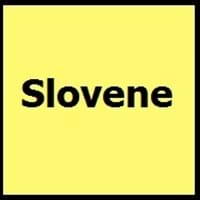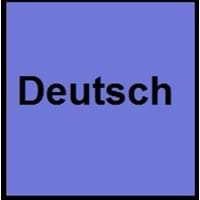Countries
European Union, Slovenia
Austria, Belgium, Germany, Italy, Liechtenstein, Luxembourg, Switzerland
National Language
Austria, Croatia, Hungary, Italy, Slovenia
Germany
Second Language
Not spoken in any of the countries
North Dakota, United States of America
Speaking Continents
Europe
Europe
Minority Language
Austria, Hungary, Italy
Czech Republic, Denmark, Former Soviet Union, France, Hungary, Italy, Namibia, Poland, Romania, Slovakia, Slovenia
Regulated By
Slovenian Academy of Sciences and Arts
Council for German Orthography
Interesting Facts
- The Freising Monuments is the oldest preserved records of written Slovene from 10th century.
- The first Slovene book was printed in 1550.
- One of the large group of Indo-Germanic languages is German.
- The second most popular Germanic language spoken today behind English is German language.
Similar To
Serbo-Croatian
Dutch, Danish, Norwegian, Swedish and English Languages
Derived From
Not Available
Albanian Languages
Alphabets in
Slovene-Alphabets.jpg#200
German-Alphabets.jpg#200
Writing Direction
Left-To-Right, Horizontal
Left-To-Right, Horizontal
How Are You?
Kako se imate?
Wie geht es dir?
Good Night
Lahko noč
gute Nacht
Good Evening
Dober večer
guten Abend
Good Afternoon
Dober dan
guten Tag
Good Morning
Dobro jutro
guten Morgen
Sorry
Oprostite
Verzeihung
I Love You
Ljubim te
Ich liebe dich
Excuse Me
Oprostite
Entschuldigung
Dialect 1
Prekmurje Slovene
Swiss German
Where They Speak
Hungary, Slovenia
Switzerland
Dialect 2
Resian
Swabian German
Where They Speak
Italy
Germany
How Many People Speak
Not Available
Dialect 3
Styrian
Texas German
Where They Speak
Slovenia
Texas
How Many People Speak
Not Available
Speaking Population
Not Available
Second Language Speakers
Not Available
Native Name
Not available
Deutsch
Alternative Names
Slovenian, Slovenscina
Deutsch, Tedesco
French Name
slovène
allemand
German Name
Slowenisch
Deutsch
Pronunciation
[slɔˈʋèːnski ˈjɛ̀ːzik], [slɔˈʋèːnʃt͡ʃina]
[ˈdɔʏtʃ]
Ethnicity
Slovenes
Germans
Origin
972-1093
6th Century AD
Language Family
Indo-European Family
Indo-European Family
Subgroup
Not Available
Germanic
Branch
Not Available
Western
Early Forms
No early forms
No early forms
Standard Forms
Slovene
German Standard German, Swiss Standard German and Austrian Standard German
Language Position
Not Available
Signed Forms
Not Available
Signed German
Scope
Individual
Individual
ISO 639 6
Not Available
deus
Glottocode
slov1268
high1287, uppe1397
Linguasphere
53-AAA-f
52-ACB–dl & -dm
Language Type
Living
Living
Language Linguistic Typology
Not Available
Subject-Object-Verb, Subject-Verb-Object
Language Morphological Typology
Fusional
Fusional, Synthetic
All Slovene and German Dialects
Most languages have dialects where each dialect differ from other dialect with respect to grammar and vocabulary. Here you will get to know all Slovene and German dialects. Various dialects of Slovene and German language differ in their pronunciations and words. Dialects of Slovene are spoken in different Slovene Speaking Countries whereas German Dialects are spoken in different German speaking countries. Also the number of people speaking Slovene vs German Dialects varies from few thousands to many millions. Some of the Slovene dialects include: Prekmurje Slovene, Resian. German dialects include: Swiss German , Swabian German. Also learn about dialects in South American Languages and North American Languages.
Slovene and German Speaking population
Slovene and German speaking population is one of the factors based on which Slovene and German languages can be compared. The total count of Slovene and German Speaking population in percentage is also given. The percentage of people speaking Slovene language is Not Available whereas the percentage of people speaking German language is 1.39 %. When we compare the speaking population of any two languages we get to know which of two languages is more popular. Find more details about how many people speak Slovene and German on Slovene vs German where you will get native speakers, speaking population in percentage and native names.
Slovene and German Language Codes
Slovene and German language codes are used in those applications where using language names are tedious. Slovene and German Language Codes include all the international language codes, glottocodes and linguasphere.





